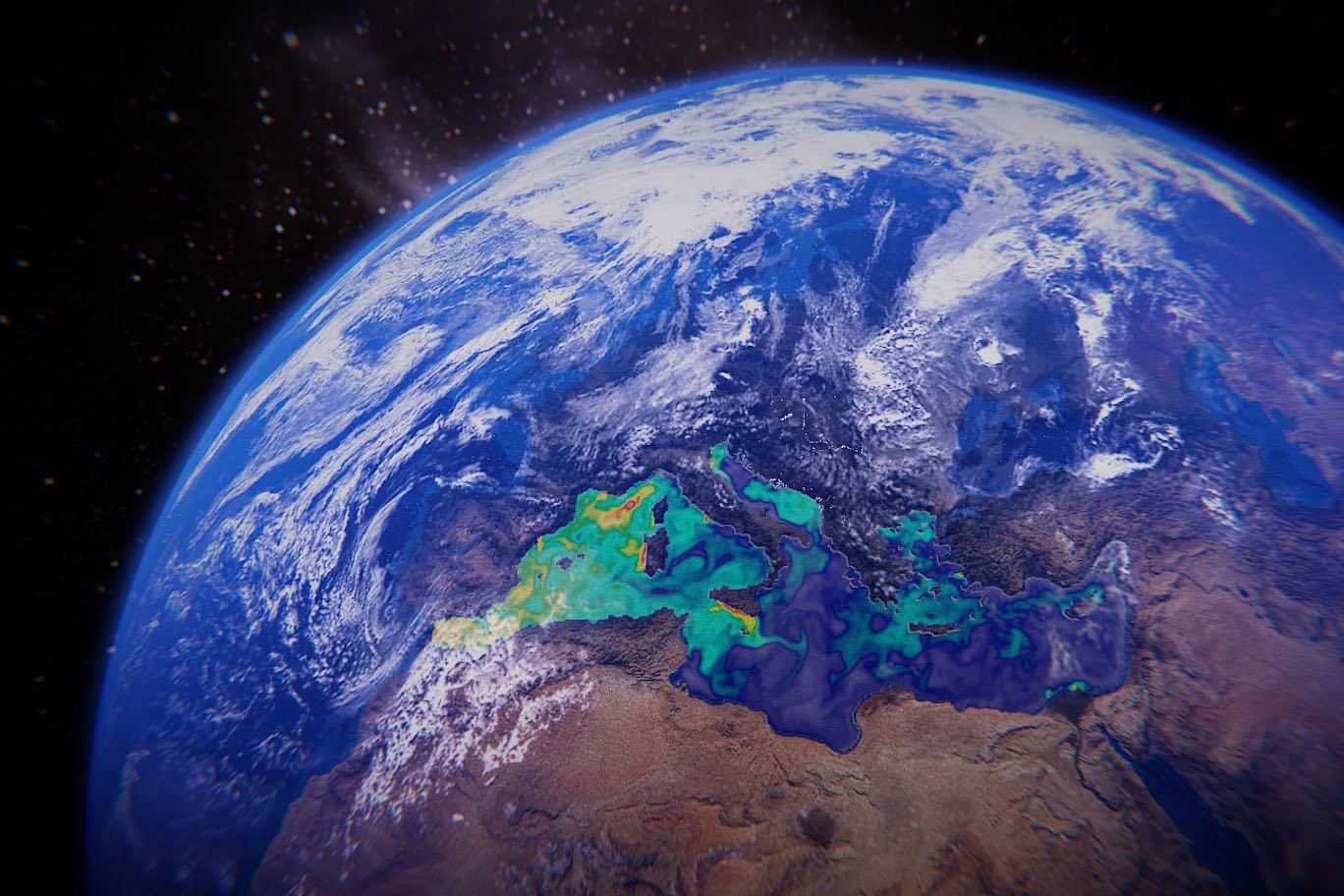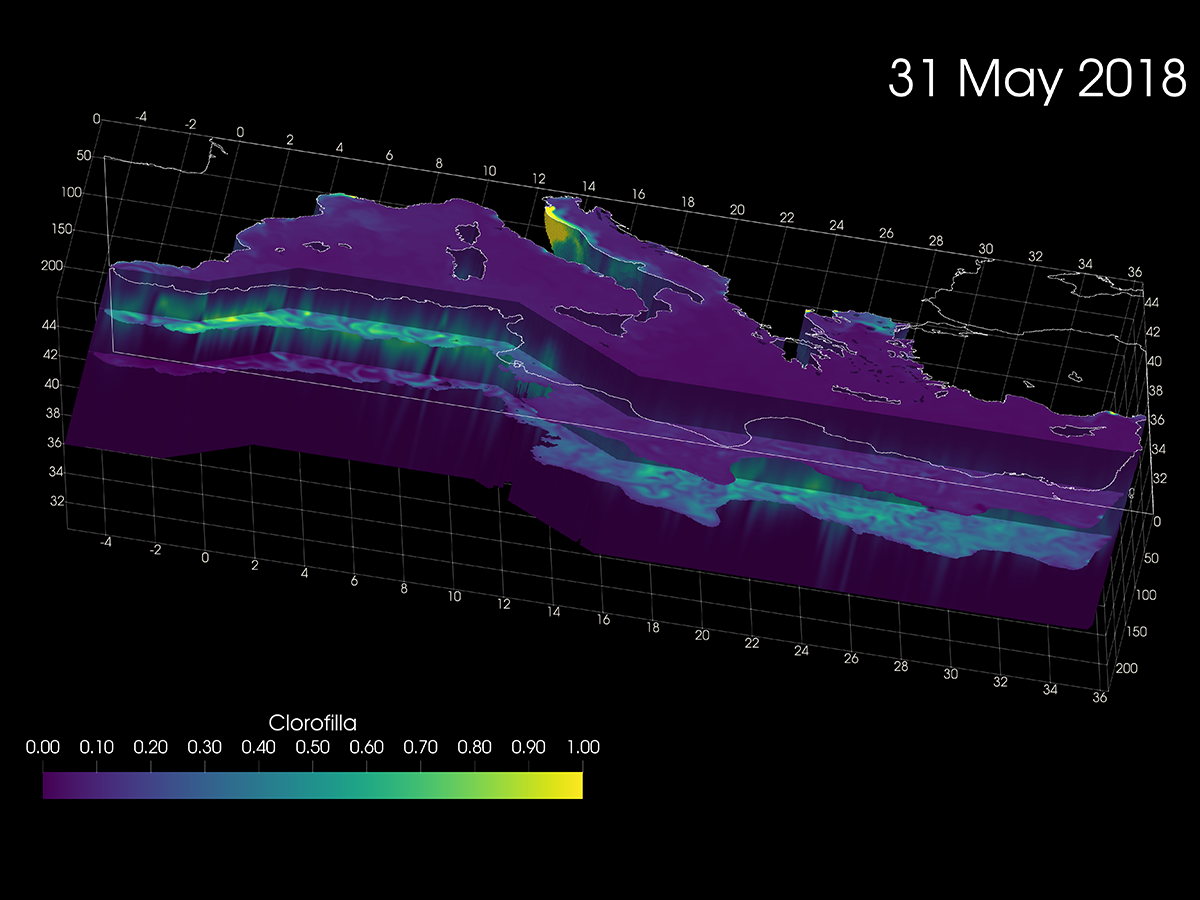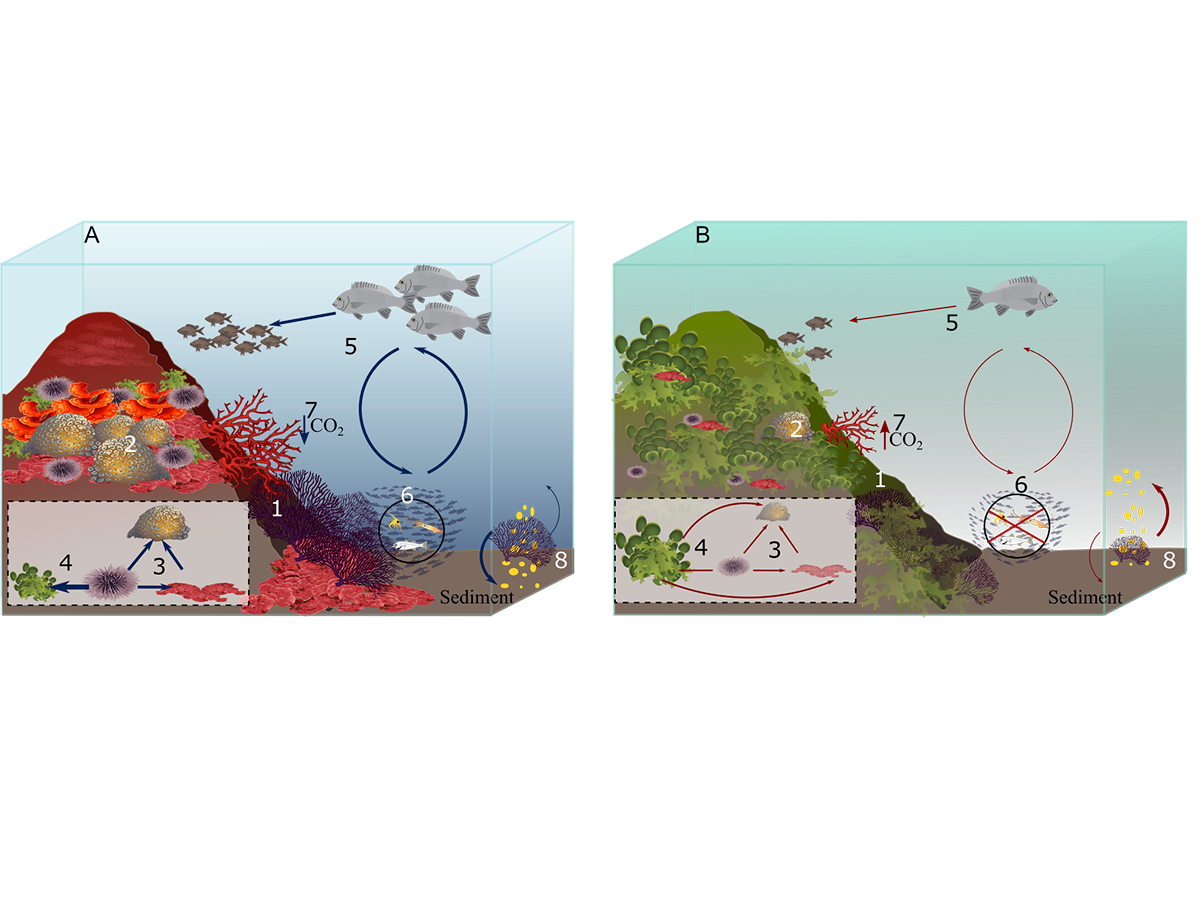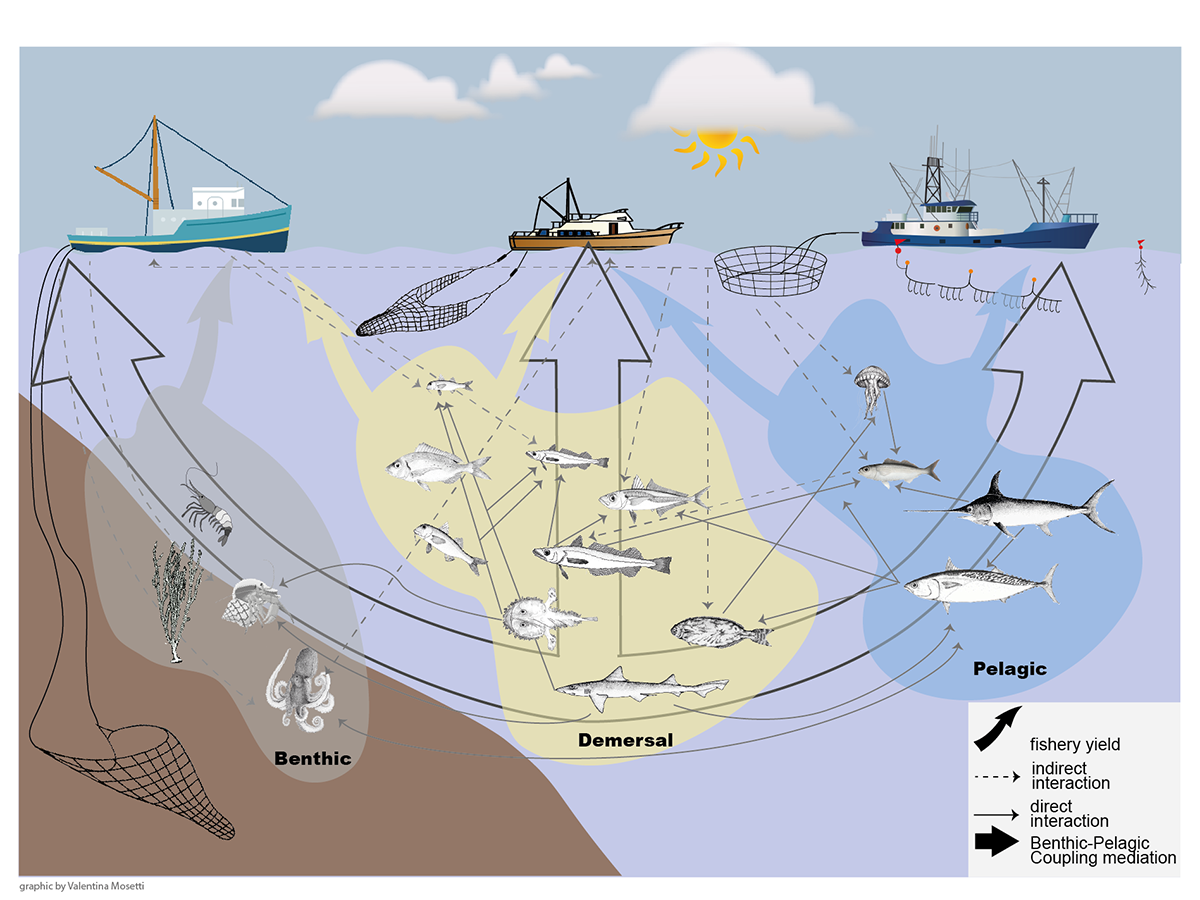Understanding and quantitatively representing the dynamics of marine, coastal and lagoon ecosystems, through the development and use of numerical analysis methods and models of different complexity that describe and integrate physical, biogeochemical and ecological dynamics at different spatial and temporal scales, also using artificial intelligence and supercomputing technologies.
The group addresses scientific questions related to interactions between physics and biogeochemistry, anthropogenic impact on marine systems at different spatial-temporal scales, study of ecosystems functioning and their biodiversity, simulation of trophic networks and ecosystem approach to fisheries and aquaculture, operational oceanography, integrated analysis of ecological-socio-economic systems, sustainable development, integrated coastal zone management.
The areas of interest include the Mediterranean Sea, the Adriatic-Ionian system, the Northern Adriatic Sea and its lagoon systems, the Strait of Sicily.
The research topics are included in the outcomes of the Ocean Decade:
A clean ocean where sources of pollution are identified and removed
- Studies on the vulnerability of marine, coastal and lagoon ecosystems in relation to environmental risks, such as oil spills, microplastics and other pollutants in the sea, and impacts related to the mercury cycle, including methylmercury.
- Traditional and next-generation statistical methods to assess the quality of waters and marine systems, to support environmental agencies and implement national and international directives.
A healthy and resilient ocean where marine ecosystems are mapped and protected
- Analysis of trophic networks and spatial distribution of marine organisms in relation to environmental variables to identify ecological niches, explore population dynamics, ecosystem health and biodiversity, and to explain and predict possible variations at different spatio-temporal scales.
- Study of carbon and nutrient cycles, and of the interactions between biological, physical, optical and chemical components as a basis for understanding the functioning, dynamics and changes in marine ecosystems.
A predictable ocean in which society has the ability to understand current and future ocean conditions
- Reconstructions of past and simulations of future scenarios to assess the impacts of increased atmospheric CO2 and other anthropogenic activities (changes in land use, nutrient and pollutant loads in coastal areas, fishing pressures) on biogeochemistry, distribution of organisms of different trophic levels and habitats.
- Development and implementation of data assimilation techniques, a key aspect of predictive capacity to obtain an optimal estimate of the true state of the ocean.
A safe ocean where people are protected from hazards and extreme events
- Operational ocean forecasting systems integrating remote observations, in situ measurements and numerical models, for monitoring the state of the oceans, the blue economy and the protection and management of marine ecosystems.
- Study of ecological dynamics resulting from the introduction of alien species, and of toxic algal blooms.
A sustainably exploited ocean that ensures food supply
- Ecosystem approach to fisheries and aquaculture through the analysis of trophic data, marine networks and trophic chains, and the use of integrated modelling approaches to provide a scientific basis to support decision-makers in evaluating possible management alternatives, considering ecological, social and economic aspects.
- Analysis of ecosystem services to support integrated and sustainable management of marine and coastal areas through quantitative methods of ecological and socio-economic analysis to analyse ecological functions and processes, capacities, flows, and demand for goods and services from the ecosystem to humans.
A transparent ocean with open access to data, information and technologies
- Within the EU Copernicus Marine Services, we are responsible for producing forecasts and reanalyses of the biogeochemistry of the Mediterranean Sea and, as a downstream service, we operate an operational system for forecasting the physical and biogeochemical state of the northern Adriatic Sea. The data and software used are aligned with the FAIR philosophy.
- We manage the participation of OGS in the PRACE-Italy infrastructure in which other sections of OGS also collaborate. With the support of CINECA, we have implemented the training programme "HPC Training and Research for Earth Sciences" (HPC-TRES) for the use of HPC technologies in Earth Sciences.
- The tools are based on a quantitative approach that exploits the potential of High Performance Computing (HPC) to increase spatial resolution and enhance the complexity of the physical, biogeochemical and ecological processes described in the numerical algorithms.
An inspiring and engaging ocean
- The group contributes to educational and dissemination activities at different levels, from participation in public events, to teaching in university courses, masters and doctorates, to the organisation of international congresses and schools (e.g. ECEM, AMAREMED, EuroGOOS Ocean Literacy Network).




